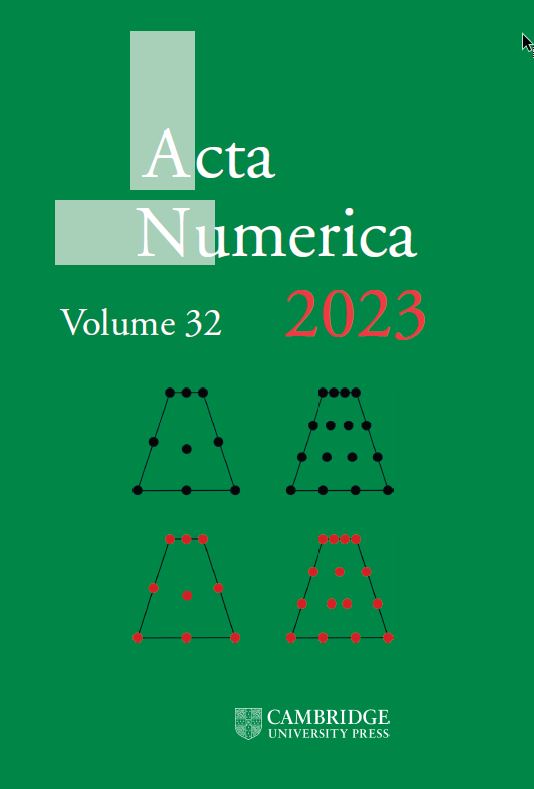High-dimensional integration: The quasi-Monte Carlo way*†
IF 16.3
1区 数学
Q1 MATHEMATICS
引用次数: 565
Abstract
This paper is a contemporary review of QMC (‘quasi-Monte Carlo’) methods, that is, equal-weight rules for the approximate evaluation of high-dimensional integrals over the unit cube [0,1]s, where s may be large, or even infinite. After a general introduction, the paper surveys recent developments in lattice methods, digital nets, and related themes. Among those recent developments are methods of construction of both lattices and digital nets, to yield QMC rules that have a prescribed rate of convergence for sufficiently smooth functions, and ideally also guaranteed slow growth (or no growth) of the worst-case error as s increases. A crucial role is played by parameters called ‘weights’, since a careful use of the weight parameters is needed to ensure that the worst-case errors in an appropriately weighted function space are bounded, or grow only slowly, as the dimension s increases. Important tools for the analysis are weighted function spaces, reproducing kernel Hilbert spaces, and discrepancy, all of which are discussed with an appropriate level of detail.高维积分:拟蒙特卡罗方法*†
本文回顾了QMC(“拟蒙特卡罗”)方法,即单位立方体[0,1]s上高维积分近似求值的等权规则,其中s可能很大,甚至是无穷大。在一般的介绍之后,论文调查了晶格方法,数字网络和相关主题的最新发展。在这些最近的发展中,有晶格和数字网络的构造方法,以产生对足够光滑的函数具有规定收敛速度的QMC规则,并且在理想情况下也保证随着s的增加,最坏情况误差的缓慢增长(或不增长)。称为“权重”的参数起着至关重要的作用,因为需要仔细使用权重参数来确保适当加权函数空间中的最坏情况误差是有界的,或者随着维度s的增加而缓慢增长。用于分析的重要工具是加权函数空间、再现核希尔伯特空间和差异,所有这些都进行了适当的详细讨论。
本文章由计算机程序翻译,如有差异,请以英文原文为准。
求助全文
约1分钟内获得全文
求助全文
来源期刊

Acta Numerica
MATHEMATICS-
CiteScore
26.00
自引率
0.70%
发文量
7
期刊介绍:
Acta Numerica stands as the preeminent mathematics journal, ranking highest in both Impact Factor and MCQ metrics. This annual journal features a collection of review articles that showcase survey papers authored by prominent researchers in numerical analysis, scientific computing, and computational mathematics. These papers deliver comprehensive overviews of recent advances, offering state-of-the-art techniques and analyses.
Encompassing the entirety of numerical analysis, the articles are crafted in an accessible style, catering to researchers at all levels and serving as valuable teaching aids for advanced instruction. The broad subject areas covered include computational methods in linear algebra, optimization, ordinary and partial differential equations, approximation theory, stochastic analysis, nonlinear dynamical systems, as well as the application of computational techniques in science and engineering. Acta Numerica also delves into the mathematical theory underpinning numerical methods, making it a versatile and authoritative resource in the field of mathematics.
 求助内容:
求助内容: 应助结果提醒方式:
应助结果提醒方式:


